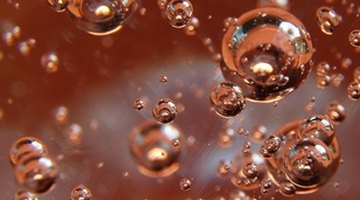What Are the Causes of Bubbles in Fiberglass Gel Coat?
Gel coat is a thickened resin product that is used for the outer layer on fiberglass projects. It is usually applied first onto a mold before fiberglass is added behind it. Occasionally, bubbles form in the gel coat layer, resulting in an unattractive finish and a potentially costly repair. There are several causes of bubbles in gel coat.
Uncured Gel Coat

Gel coat is mixed with a chemical catalyst in order to transform it from a liquid to a solid. This process is called curing. The catalyst must be thoroughly mixed into the gel coat to ensure proper curing. If it is not mixed completely, there may be small portions of uncured gel coat in the bucket. If this gel coat is brushed or sprayed onto a molding surface, it will form a liquid bubble when the material around it hardens.
Rapid Mixing
While gel coat must be mixed thoroughly, care should be taken not to stir it too rapidly. Whipping gel coat like meringue will fill it with tiny bubbles. These bubbles can remain in the gel coat when it is brushed onto the mold surface, resulting in small voids in the finished product. Tiny air bubbles trapped in the gel coat are rarely a problem, but larger bubbles can allow chips to easily form in the finished surface.
Improper Fiberglass Layup
Once gel coat has cured, fiberglass resin is brushed on and fiberglass is applied, either in sheets or as a spray of chopped fibers. This fiberglass is saturated with more resin and additional layers are added. If air bubbles trapped between the fiberglass and gel coat are not properly removed, they will remain when the resin cures. Time must be taken to work out any air bubbles from each layer of fiberglass.
Osmotic Blistering
Once a fiberglass project is finished, bubbles can still form over time. If the gel coat is exposed to large amounts of water, as is the case for boat hulls, water can gradually pass through the gel coat and form osmotic blisters. The water seeps in through osmosis, but gets trapped and cannot escape. A blister gradually forms as a result. Most of these bubbles are harmless, but they can occasionally be large enough to cause structural damage.
References
Writer Bio
Alex Smith began writing in 2006 and brings a combination of education and humor to various websites. He holds a Master of Arts in theater and works as a professional makeup and special-effects artist.
Photo Credits
- bubbles image by Diana Wolfraum from Fotolia.com
More Articles



